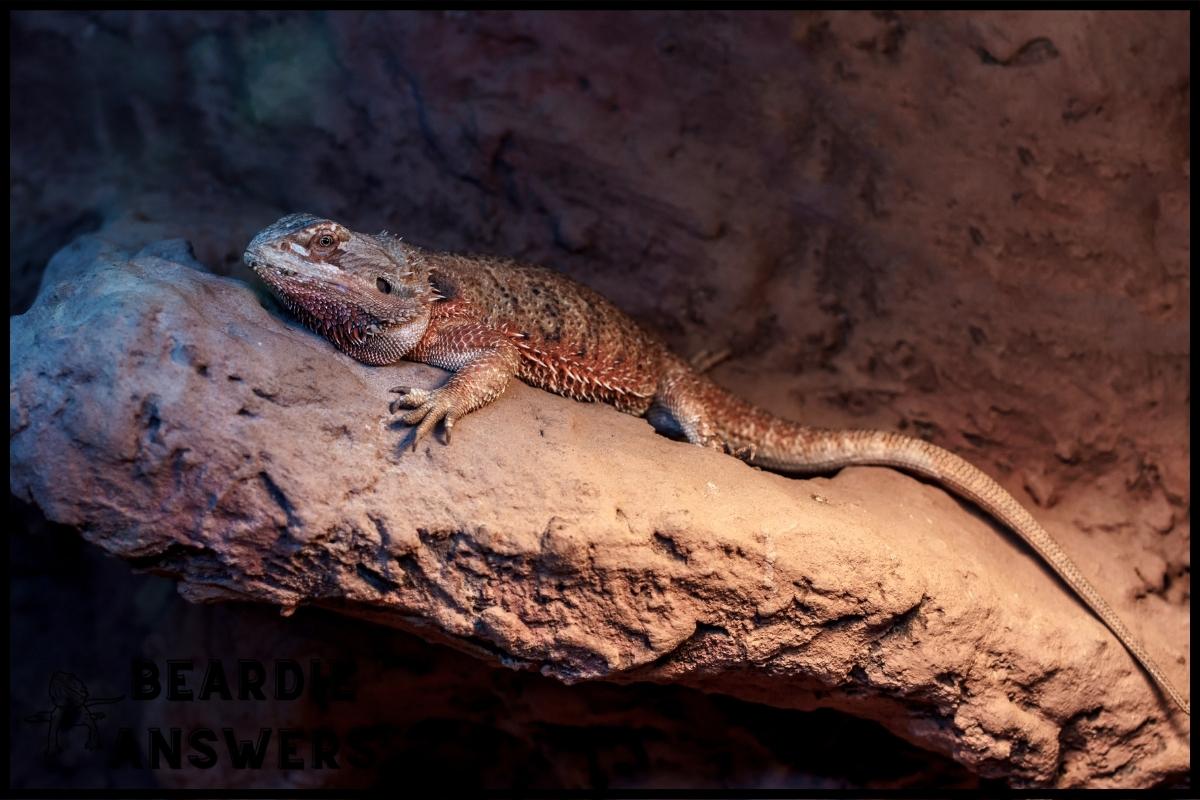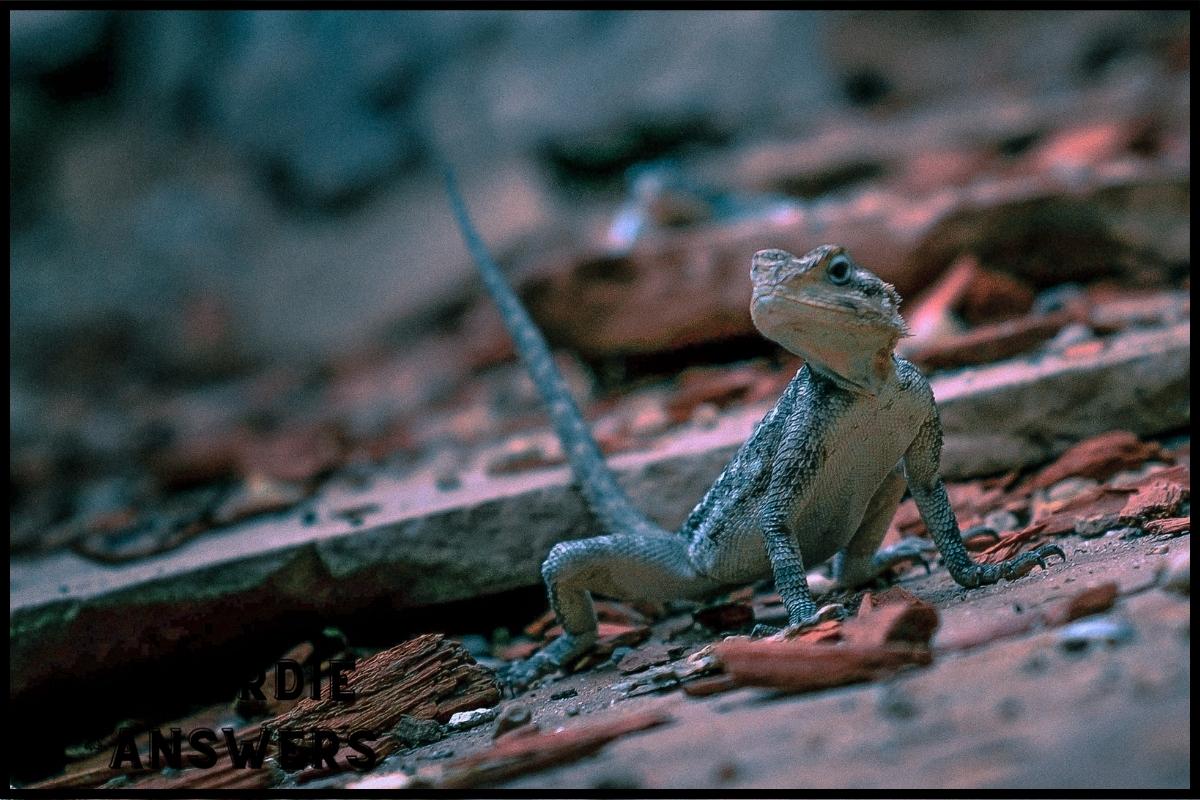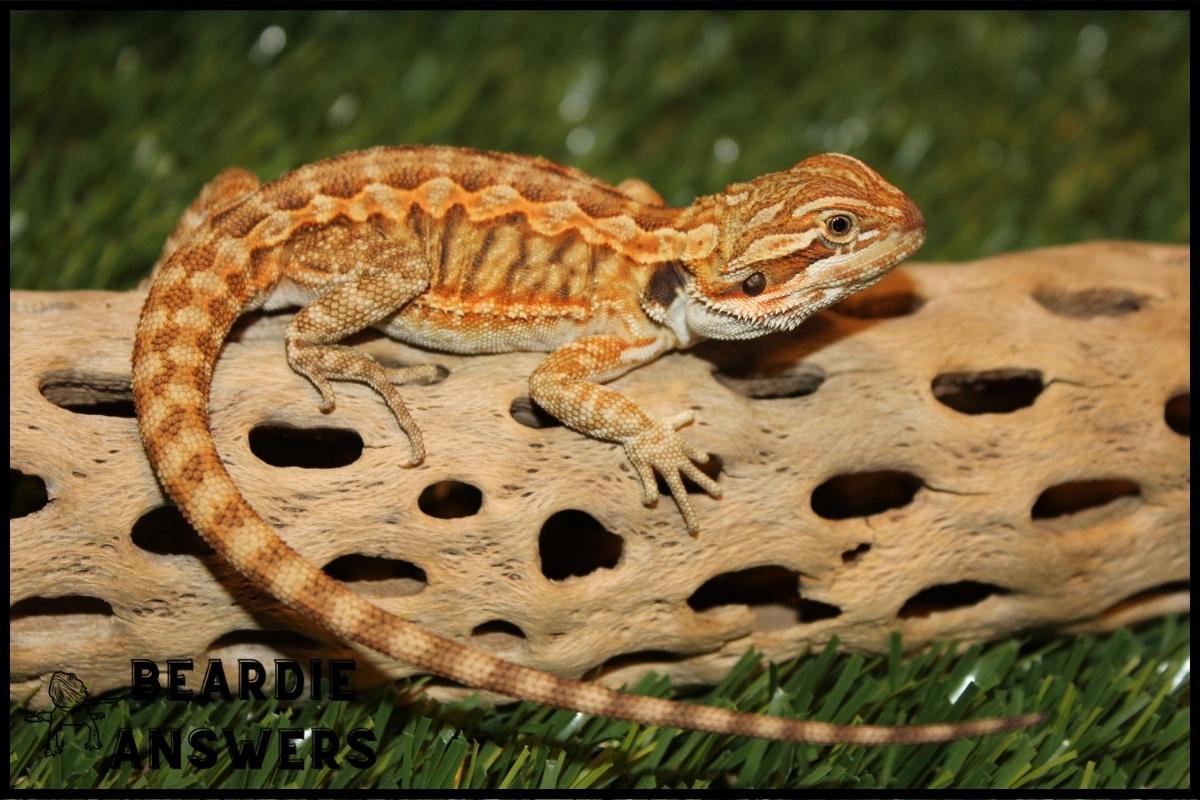[su_note note_color=”#eee”]
Are bearded dragons fast: While they are not the fastest reptiles, they can move quickly when needed, such as when hunting prey or escaping from a potential predator. Their quick movements are supported by their strong legs and tail muscles.[/su_note]
Bearded dragons are often kept as beloved pets. But have you ever wondered just how fast these lizards can move? Are bearded dragons fast runners? The answer is not entirely straightforward; while they aren’t particularly swift, they do possess the ability to move quickly when necessary.
In this article, we’ll explore what makes a bearded dragon tick and find out why it’s not known for its speed. Bearded dragons come in many shapes and sizes, but one thing remains consistent – their love of warm climates. Native to parts of Australia, these reptiles enjoy basking in the sun and burrowing underneath cool sand or dirt.
This particular species spends most of its time on land rather than water, so it’s well adapted to moving around dry surfaces with ease. So let’s take a closer look at whether bearded dragons really are built for speed!
What You'll Learn
Speed And Mobility
Bearded dragons are not known for their speed, however they have developed a few running techniques to help them move quickly when needed.
These reptiles use their tail for mobility and agility drills. They rely heavily on heat tracking to locate food sources as well as avoid predators due to the fact that bearded dragons primarily hunt during the night.
Eating habits also play an important role in how fast they can move since being overweight can slow them down considerably.
These unique adaptations allow bearded dragons to control their speed depending on the situation at hand. With these skills in tow, these creatures are able to navigate through different environments with relative ease and safety.
Controlling Speed
Bearded dragons have the ability to move quickly when needed, but are not particularly fast by nature. Factors like an individual’s stamina levels, temperature impact, and stress levels can all affect their speed. Age differences also play a role; younger bearded dragons tend to be more active than adults.
With regular agility training, it may even be possible for an adult dragon to increase its mobility and speed.
Environments with higher temperatures or those that allow plenty of activity will often result in faster movement from bearded dragons as well. When they feel threatened or sense danger nearby, they’ll exhibit bursts of quickness in order to escape whatever is causing them distress.
To help keep up their energy and optimize this response, it’s important to provide your pet with proper nutrition and enrichment activities.
Moving forward, we’ll look at some of the most common reasons why bearded dragons might need to move quickly – such as escaping predators or trying to find food sources.
Reasons For Quick Movement
Bearded dragons have a few reasons they may move quickly. One of the main reasons is to mimic other animals in their environment as a defensive technique, known as mimicry techniques. This allows them to blend into their surroundings when needed and evade potential predators or prey.
Another reason for quick movement could be related to habitat selection; by moving fast, bearded dragons can find shelter more easily when necessary and avoid danger.
In addition, these reptiles have an impressive sprinting ability which helps them with temperature regulation since they rely heavily on external heating sources. Being able to move rapidly from one place to another enables them to bask in direct sunlight for longer periods of time, thus helping regulate their body temperatures better than if they moved slowly or stayed still altogether.
With such abilities, it’s no wonder that bearded dragons are well-suited for environments requiring high speed movements…
Environments Requiring High Speed
Having discussed the reasons why bearded dragons may move quickly, it’s important to understand what kinds of environments and situations could require high speed. Bearded dragons have developed adaptive running abilities to help them respond to predation or find safe spaces in their habitat. This is especially true for younger lizards, who are more likely to be targeted by predators than adults.
Here are three key elements related to when a bearded dragon may need fast movement:
- Visual Tracking: A bearded dragon can use its vision to locate potential prey or detect environmental changes that may signal danger. It will then increase its speed in order to catch the prey or reach safety from any threats.
- Predatory Responses: When threatened by a predator, a beardie will accelerate as needed, either fleeing away from the threat or lunging toward it if necessary.
- Adaptive Running: Depending on the situation and terrain, a beardie can adjust its pace accordingly with subtle shifts in how they run – such as using different limbs for support or shifting direction rapidly.
So while beardies aren’t necessarily known for being particularly speedy creatures, they do possess an impressive capacity for quick movements when needed. Next we’ll look at how these speeds can be measured objectively.
How To Measure Bearded Dragon Speed
Measuring a bearded dragon’s speed can be like trying to catch lightning in a bottle. It is difficult because of the complexity involved with their behavior and environmental cues. To measure their speed accurately, knowledge of both physical and mental agility must be taken into account.
The following table shows some of the most important factors that influence a bearded dragon’s speed:
| Behavioral Patterns | Temperature Regulation |
|---|---|
| Food Preferences | Environmental Cues |
| Mental Agility |
A bearded dragon’s size greatly affects its movements as well; larger dragons are usually slower than smaller ones. Additionally, age plays an important role since young dragons tend to move faster due to greater energy reserves. Furthermore, certain conditions such as sickness or injury will reduce their overall speed drastically. Lastly, different types of terrain also have an effect on how quickly they move from one place to another; for example, smooth surfaces allow them to scuttle along with ease while rougher terrains hinder movement significantly.
Understanding these various elements allows us to better observe and record changes in a bearded dragon’s velocity over time so we can make informed decisions regarding its wellbeing and health.
Ultimately, this information can help us provide our pets with the best care possible by providing adequate exercise opportunities suitable for their unique needs.
Conclusion
In conclusion, bearded dragons are not particularly fast animals. However, they can move quickly when needed and in certain environments may require more speed than usual. Surprisingly, a bearded dragon’s top speed is only around 8 mph! To measure the speed of your own pet dragon, you could try timing how long it takes them to get from one end of their enclosure to the other.
Bearded dragons have evolved to be relatively slow-moving creatures but there are plenty of ways for an owner to keep them entertained and engage with their environment. For example, adding tunnels or hiding places encourages natural behaviours and gives your reptile something interesting to explore.
Additionally, providing obstacles for them to climb on can help increase physical activity levels – all great news for keeping your beardie healthy and happy!
Overall, understanding the speed at which your bearded dragon moves is key to creating a safe and stimulating home environment that meets all its needs. With proper care, these incredible reptiles will thrive in captivity – so why not give yours the best start?

Hi! My name is Bryan, I am the “one behind the words” here are BeardieAnswers.com. I believe that providing quality care and nutrition is the best way to ensure the health of your pet. Every beardie is special and deserves the best care and attention. If you have questions about your bearded dragon, please don’t hesitate to ask! View My Full Author Page




